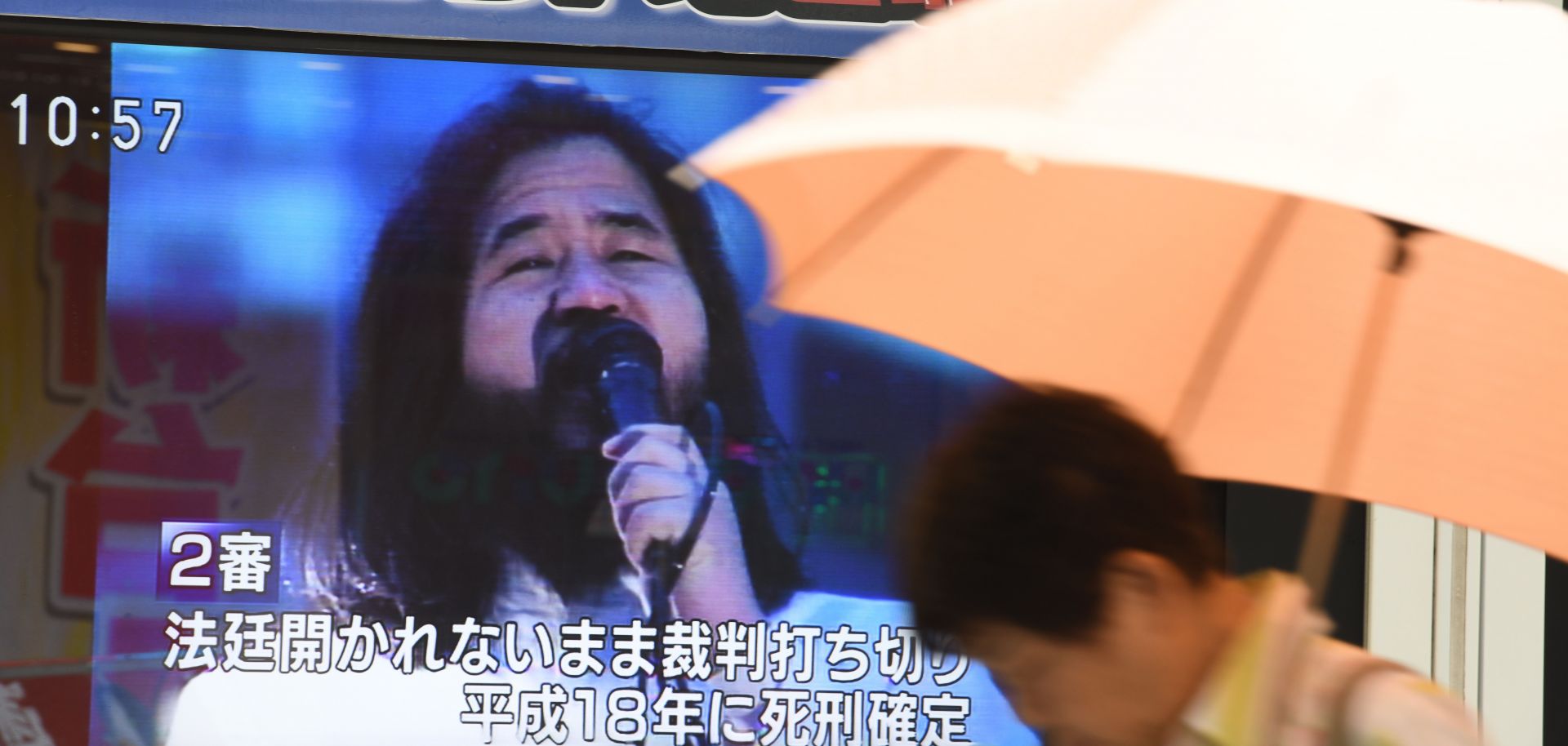COLUMNS
The Japanese Death Cult's String of Futility

Jul 10, 2018 | 10:00 GMT

A television screen in Tokyo announces the execution of Shoko Asahara, leader of the Aum Shinrikyo cult, which conducted a deadly attack on the Tokyo subway in 1995.
(TOSHIFUMI KITAMURA/AFP/Getty Images)
Highlights
- From the late 1980s to the mid-1990s, Aum Shinrikyo launched the most ambitious weapons-of-mass-destruction program ever by a non-state actor.
- Despite devoting years of effort and tens of millions of dollars, the program met with only limited success.
- Using more readily available weapons such as guns and explosives remains far cheaper and more effective in causing mass casualties.
Subscribe Now
SubscribeAlready have an account?
